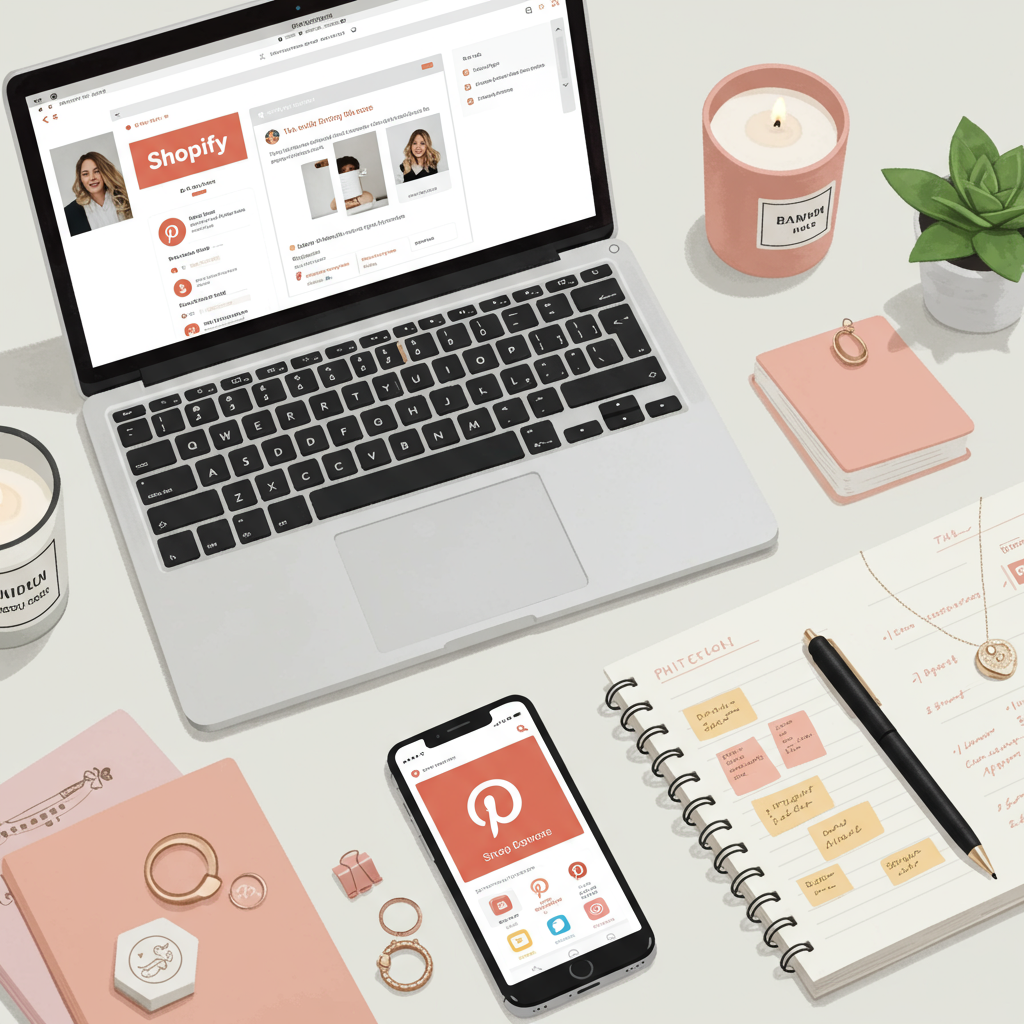Discover how I’ve successfully harnessed the power of Pinterest’s visual appeal and influencer reach to boost brand awareness and drive significant conversions for my e-commerce business.
As a Shopify store owner, I’m constantly on the lookout for innovative ways to expand my reach and connect with potential customers. The digital landscape is vast, and standing out requires a strategic approach.
Early in my journey, I realized the immense, often untapped, potential of Pinterest. It’s not just another social media platform; it’s a powerful visual search engine where users actively seek inspiration and plan purchases.
My products, being highly visual, seemed like a natural fit for Pinterest. I started by creating my own pins, optimizing descriptions, and building boards. While I saw some organic growth, it was slow and steady.
I soon understood that to truly accelerate my brand’s visibility and trust, I needed to tap into established communities. This led me down the path of exploring influencer marketing, specifically on Pinterest.
Why Pinterest influencers, you might ask? Unlike other platforms, Pinterest users are often in a ‘discovery’ or ‘planning’ mindset, making them highly receptive to new products and ideas. Influencers here act as trusted curators.
These creators understand the unique nuances of the platform – from crafting compelling Idea Pins to optimizing Rich Pins for maximum impact. Their audience trusts their aesthetic and recommendations implicitly.
My first step in this process was to clearly define my ideal influencer. I looked for creators whose personal brand and content aesthetic perfectly aligned with my store’s values and product style.
It’s not just about follower count; engagement rate, the quality of their existing pins, and their audience demographics are far more crucial. I sought out creators who genuinely resonated with their community.
I began my search directly on Pinterest, using keywords related to my niche. I also explored influencer marketing platforms that specialize in connecting brands with Pinterest creators, which streamlined the process significantly.
Once I identified potential partners, my outreach strategy was key. I crafted personalized pitches, highlighting why I admired their work and how I envisioned our collaboration benefiting both their audience and my brand.
I always made sure to clearly outline what I was offering – whether it was free products, a commission on sales, a flat fee, or a hybrid model. Transparency from the start builds a strong foundation.
Setting clear expectations for deliverables was paramount. We discussed the number of pins, whether they would be standard pins, Idea Pins, or video pins, and the inclusion of direct links back to my Shopify store.
I also ensured that all sponsored content would be clearly disclosed, adhering to FTC guidelines and maintaining authenticity with their audience. Trust is the most valuable currency in influencer marketing.
The types of content I requested varied. Lifestyle pins showcasing my products in real-world settings were always a hit, as they helped potential customers visualize the products in their own lives.
Tutorials or DIY projects using my products proved incredibly engaging, demonstrating the product’s utility and inspiring creativity within their audience.
Curated boards featuring my products alongside complementary items from other brands also worked wonders, positioning my store as part of a broader, aspirational lifestyle.
Idea Pins, with their multi-page format, became a powerful tool for storytelling. Influencers could walk their audience through a process or showcase multiple product variations in an engaging, immersive way.
Video Pins, though requiring more effort, offered dynamic product demonstrations and behind-the-scenes glimpses, capturing attention in a scroll-heavy feed.
Tracking the success of these collaborations was crucial for me. Pinterest Analytics provided valuable insights into impressions, saves, and outbound clicks generated by the influencer’s pins.
However, the real magic happened when I cross-referenced this data with my Shopify Analytics. I could see direct referral traffic from Pinterest and, more importantly, the conversions that resulted.
To get even more granular, I always used UTM parameters in the links provided to influencers. This allowed me to precisely attribute sales and traffic to specific campaigns and even individual pins.
Measuring the ROI became straightforward: I compared the sales generated directly from an influencer’s content against the investment made in that collaboration. This data informed my future strategies.
One of my best practices has been to nurture long-term relationships with successful influencers. Consistent collaborations build stronger trust with their audience and often lead to better results over time.
I also made sure to repurpose the high-quality content created by influencers across my own Pinterest boards, website, and other marketing channels, maximizing its lifespan and impact.
Optimizing every pin, whether created by me or an influencer, with relevant keywords in the title and description, along with a clear call to action, was non-negotiable for discoverability.
A common pitfall I learned to avoid was focusing solely on an influencer’s follower count. A smaller, highly engaged niche audience often yields better results than a massive, less relevant one.
Another mistake to avoid is a lack of clear communication. Ambiguity in deliverables or expectations can lead to disappointing results and strained relationships.
Finally, never underestimate the power of authenticity. Both your brand and the influencer must genuinely believe in the value of the products being promoted. Forced endorsements rarely convert.
In my experience, leveraging Pinterest influencers has been a game-changer for my Shopify store. It’s a powerful way to build brand awareness, drive targeted traffic, and ultimately, increase sales.
I encourage you to explore this avenue for your own e-commerce business. Start small, learn from each collaboration, and scale your efforts based on what works best for your unique products and audience.
What are your thoughts on leveraging Pinterest influencers for e-commerce, and have you had any experiences you’d like to share?






